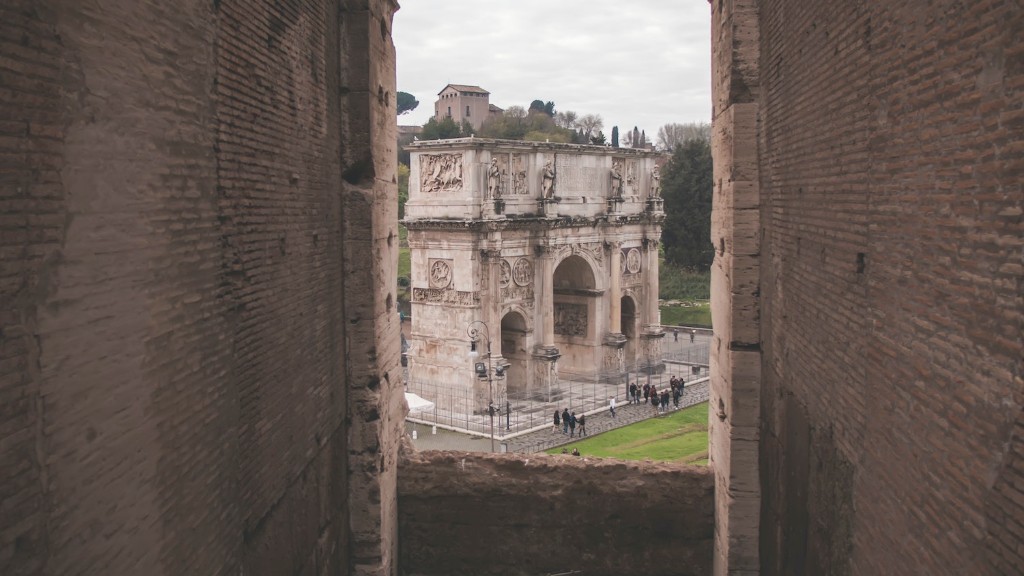Ancient Roman Women: The Lives and Freedoms of Citizens
The story of women in ancient Rome tells a complex tale of both continuity and change. Roman women had far fewer legal rights than Roman men and were subject to very different social expectations than females in other parts of the ancient world. Despite not having the same legal authority and autonomy as men, women of ancient Rome were respected, empowered and able to act independently in certain areas of society.
During the Republic, political power shifted between the patrician and plebeian classes and it is widely accepted that women in ancient Rome largely held onto their traditional, inherited power within society. The family was the core of Roman social life and women held an important role. Women often interacted with guests, acted as hostesses, supervised household economies and managed family resources. Ancient Roman women were expected to be loyal partners, modest, supportive and faithful to their husbands, even when their husbands were away from home.
In terms of legal freedoms and limitations, Roman law reflected strong patriarchal biases, particularly concerning marital property. According to Roman law, a woman’s legal status was entirely derived from her husband, who had complete control of her property, labor and body. Roman marriage was a contract that could only be broken in exceptional circumstances, such as the death of a spouse or if the husband moved away from Rome. Furthermore, in accordance with the Roman law of dowry (dos), the bride’s father was responsible for giving the bride a sum of money, goods and slaves to the groom to seal the contract.
Ancient Roman women also had a prominent role in public life. Intellectual and cultural life as well as religious activities, rituals, festivities and feasts all included women. While women were excluded from participating in political life and officials positions, certain festivals and religious ceremonies allowed for women to be in charge. For example, women in ancient Rome were allowed to take part in the Vestal Virgins cult, a religious cult dedicated to the goddess and became symbol of female power. Similarly, women were allowed to act as priestesses in other cults as well. Since females were considered sacred in Roman mythology, this was an important indicator of their elevated status and power within Roman religion.
Overall, women in ancient Rome were valued and empowered figures, who were able to excel in specific domains, despite the legal limitations imposed on them. From managing the household economies to inheriting power in public life to taking up roles in religious activities, women in ancient Rome were able exercise their autonomy, provide for their families and make a substantial contribution to the society.
Women and Education in Ancient Rome
Although education in ancient Rome was predominantly male-oriented, a number of Roman women received both formal and informal education. Roman schools were not commonplace and they were mostly held in the small temples, which meant that the privileged few who could attend were likely to be those from upper-class families. This suggests that girls from upper-class families were able to receive the same level of education as the boys from their family and sometimes even more than that.
The limited archaeological evidence and anecdotal records suggest that Roman women would be tutored at home in the absence of formal schools. In addition to being educated in reading, writing and arithmetic alongside Roman mythology, rhetoric and musical instruments, Roman girls were also taught about Roman law and literary traditions, which formed an integral part of elite Roman education. Since many Roman females had to manage the house when their husbands were away and since marriage was seen as a part of the legal game, it is possible that such education was made available to girls in order to equip them with the right tools to manage the household and family affairs.
In the upper classes a few women had the opportunity to learn more than the practical and religious pursuits. Female poets such as Sulpicia, Cornelia and especially Sappho wrote and composed works that have been admired and studied since antiquity. Furthermore, there is archaeological evidence of female sculptors and painters who produced elaborate and often religious works of art. Finally, little remains of female authors in ancient Roman, with only fragments of works remaining, particularly for the works of poetess Sappho and others, suggesting that the works of some female Roman authors may never be recovered.
In summary, although formal schooling was largely male-oriented, the upper class women and those from the privileged class enjoyed the opportunity to access education, an experience that was far less available for the majority of Roman female society.
Women and Work in Ancient Rome
Most ancient Roman women were expected to stay at home, take care of domestic duties and manage the household. The patriarchal nature of the Roman society meant that a woman’s role was under the supervision of her father or husband, including her access to her own property. As a result, most work opportunities that were open to women were available within their own households. Those women who worked in their own households were generally in charge of managing the family resources, supervising the servants and running the households.
In some rural areas, women also worked outside their homes, often as agricultural workers in the family farmlands, while some could engage in other trades such as weaving, clothing-making and pottery-making. Although these trades were usually low-paying, those with specialized skills were able to produce luxury goods and obtain relatively high wages. Furthermore, those women engaging in such activities were allowed to acquire and own property, provided that the husband was in support or had given his permission. Moreover, some single women were able to work independently in order to meet their family’s economic needs.
In comparison to most other ancient societies, Roman women had fewer restrictions on their economic activities and more freedom to engage in various types of work. Although they were restricted in their ability to obtain wealth relative to men, a number of upper class women were able to engage in trade and investments in land, which allowed them to accumulate substantial wealth by their own efforts.
In summary, it is clear that although the majority of women in ancient Rome were largely restricted to performing domestic work, some were able to engage in producing and trading goods, owning and managing properties and even accumulate wealth.
Women and Religion in Ancient Rome
Religion in ancient Rome was seen as an important element of life and religion provided a regular opportunity for the public to participate in various feasts and festivities. Women in Roman culture were expected to participate in religious activities and ceremonies, particularly in matters related to childbirth, marriage and funerals. In addition, religious organizations such as the Vestal Virgins sect provided a significant amount of honor and public recognition to its members.
The Vestal Virgins sect was an important religious and social organization in ancient Rome that was exclusively dedicated to female members who were chosen at the age of six and had to remain unmarried until they reached the age of thirty. The Vestal Virgins served both in public and domestic roles and dedicated their lives to the sacred service of the goddess Vesta. As a member of the cult, a Vestal Virgin was given a high amount of respect, associated with spiritual authority and was seen as a symbol of female power.
It is important to note that religion did not necessarily promote women’s rights and equality. For example, some of the laws concerning marriage were viewed as part of divine will and were not to be questioned or debated. Furthermore, the portrayal of woman in Roman mythology did not always portray woman in a positive light and there were some accounts of women being abused and taken advantage of by the gods.
Overall, women in ancient Rome had access to a variety of religious roles and public ceremonies. Although attending these events and activities did not necessarily improve their legal rights and freedoms, they were still seen as a source of honor and respect.
Women and Politics in Ancient Rome
During the Republic and the Empire, women in ancient Rome were generally excluded from holding roles in politics, military service and public offices. As the Roman society evolved, women were often viewed as politically incompetent and inferior to men. This situation changed, in part, during the Imperial period, when Emperor Augustus allowed for some women to become involved in public life. Augustus and his successors granted certain privileges to female family members, including membership in the Senate, access to religious roles and some legal powers.
Despite these limited changes, ancient Roman laws did not grant women the same rights as men in regards to political office, military service and other public affairs. Women were also prohibited from voting in most elections and could not serve in elected offices such as those of magistrates. Furthermore, women were not allowed to become consuls or senators and were thus excluded from the highest political offices in the Roman society.
As a result, women in ancient Rome had very limited opportunities to influence public events, as they were largely excluded from actively participating in the political life. On the other hand, some women did acquire meaningful influence by engaging in political discussions and forming alliances with influential men, such as Augustus.
In summary, although women were excluded from holding any kind of political office or office of authority, some politically ambitious women were able to achieve power and influence by other means. It is likely that some wealthy and powerful women were able to acquire meaningful roles as patrons and advisers in important political affairs.
Women and Legacy in Ancient Rome
The legacy of women in ancient Rome is complex and often blurred by the patriarchal nature of the society. Despite the legal restrictions imposed upon them, Roman women were able to hold positions of honor and authority and make substantial contributions to their society. By managing their households and taking up religious roles, upper class women such as Sulpicia, Cornelia and Sappho were able to gain recognition in their communities and their works have been long admired.
Women in Ancient Rome had also access to some important legal rights, such as the right to own property, to transact business and to initiate court proceedings. Furthermore, the Vestal Virgins cult served as an important example of female power and a position of honor.
Overall, women in Ancient Rome were able to make a number of important contributions to their society. Despite the legal restrictions, women were able to become respected members in their families, communities and the wider Roman society. In addition, some were able to take advantage of the opportunities available to them in order to accumulate wealth, honors and a degree of public recognition.





